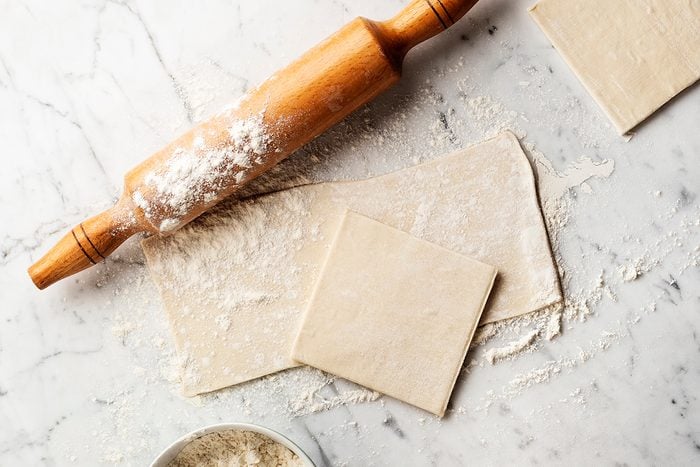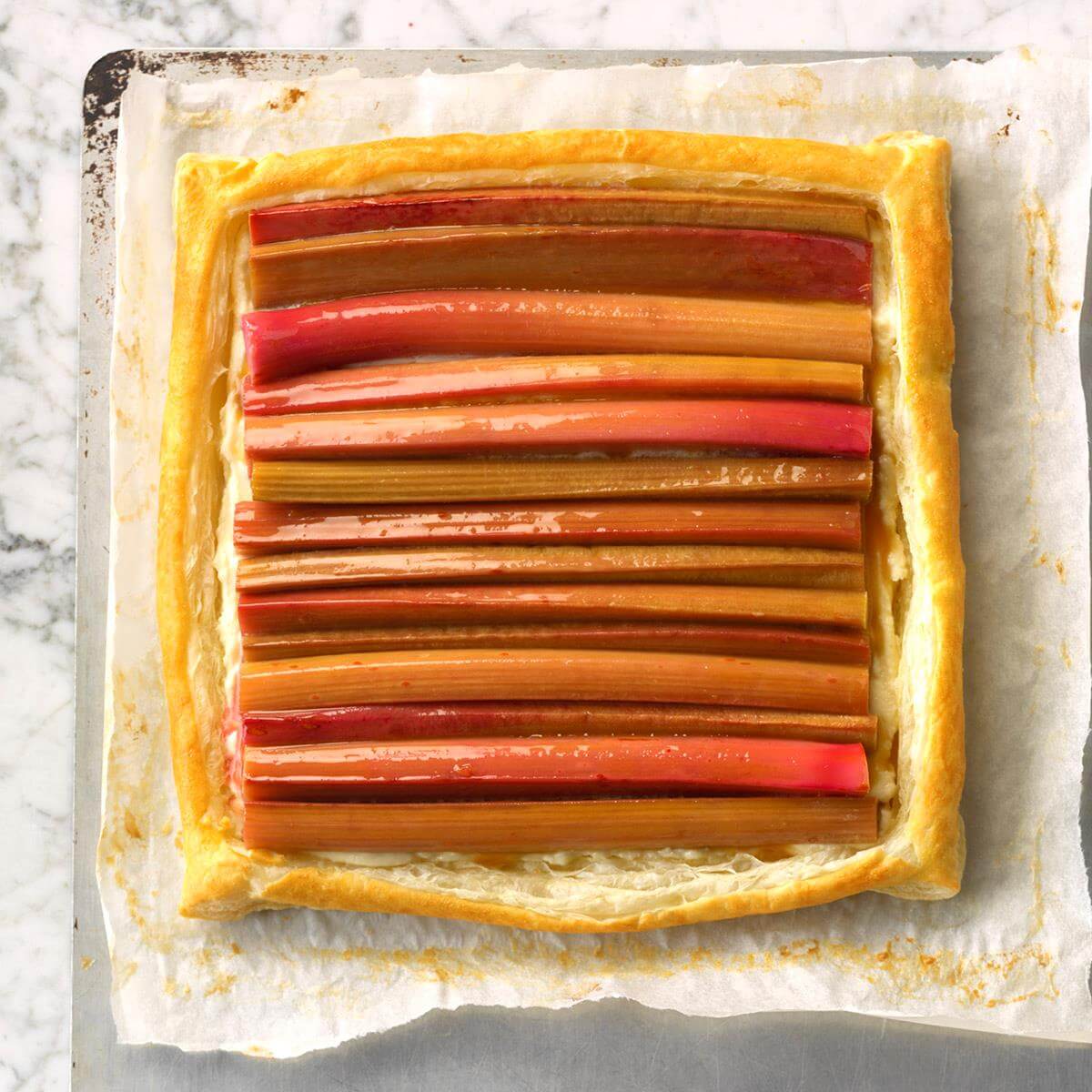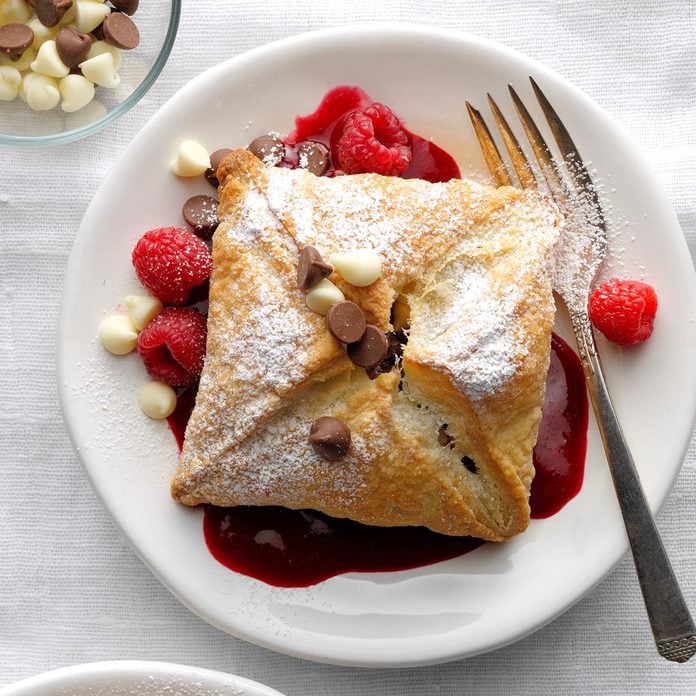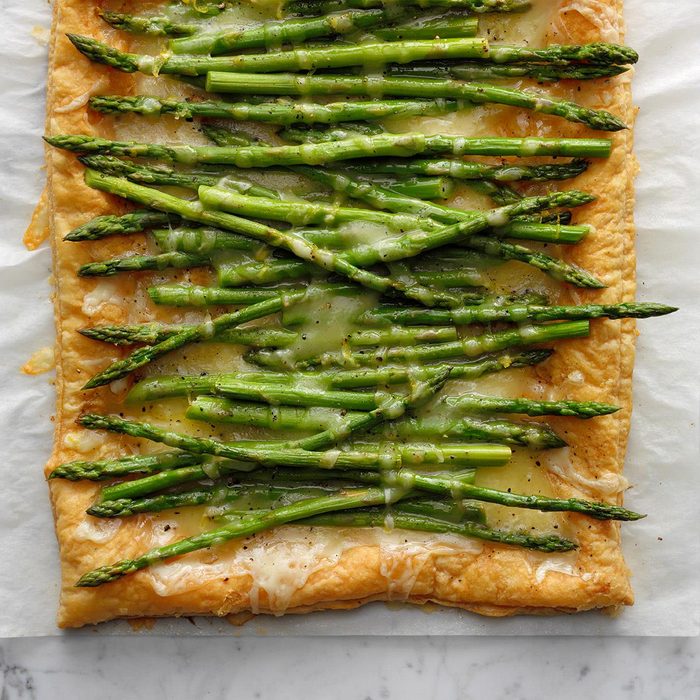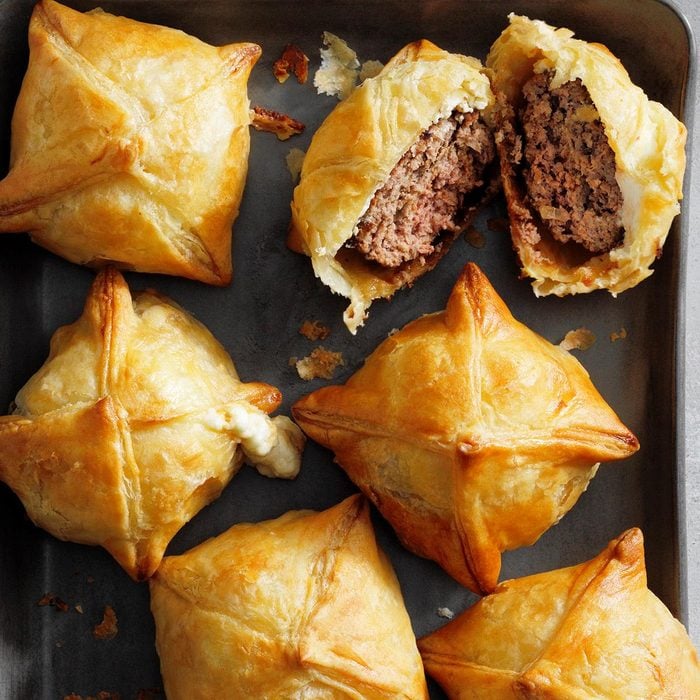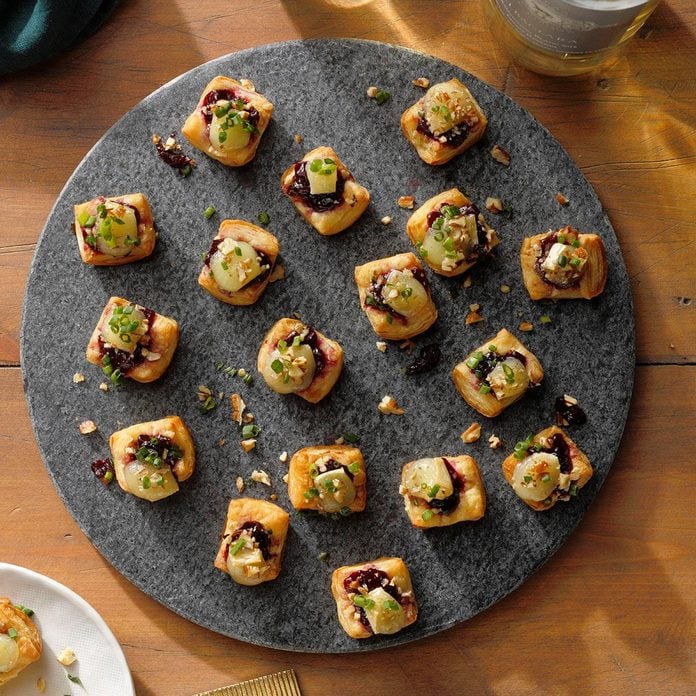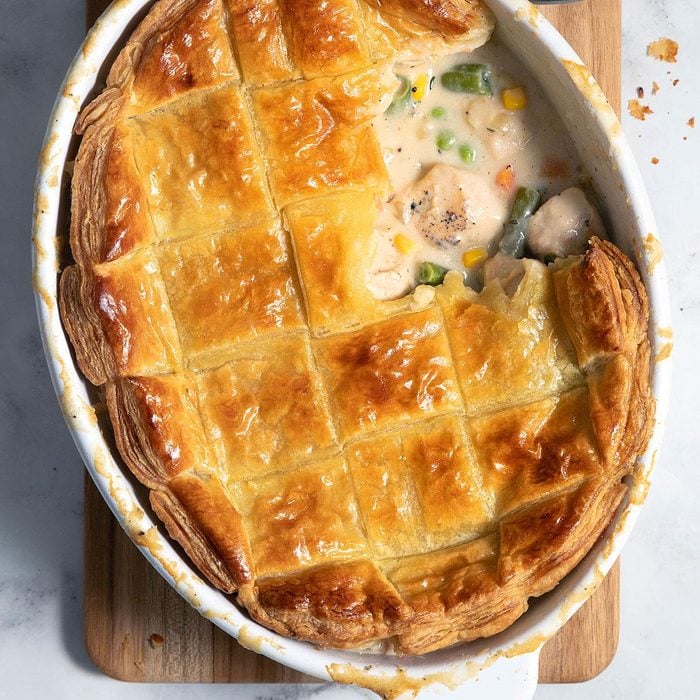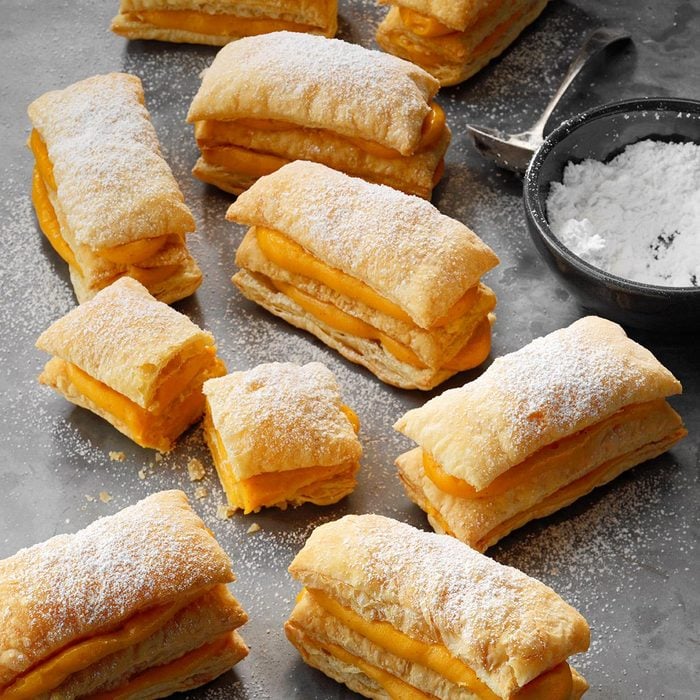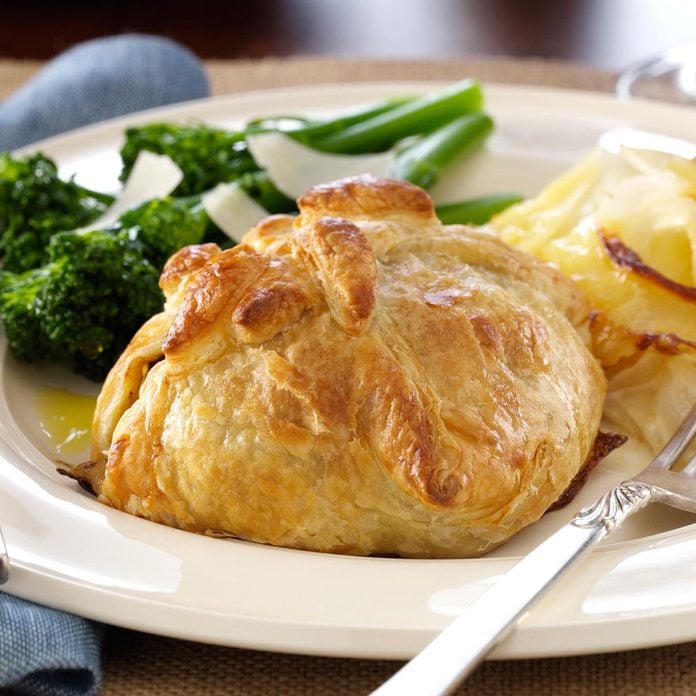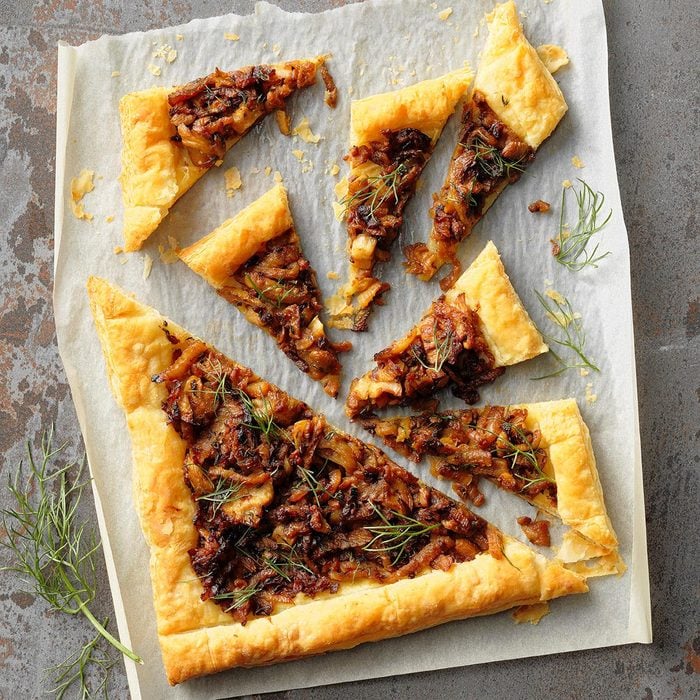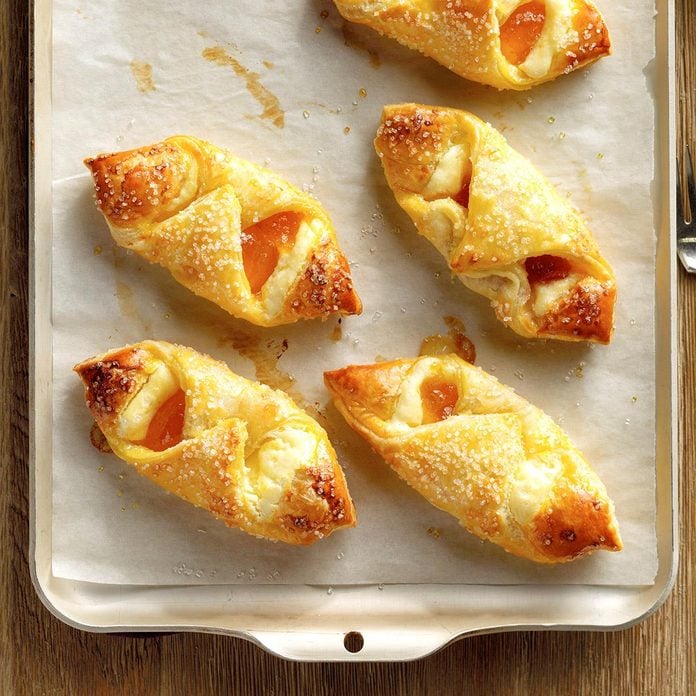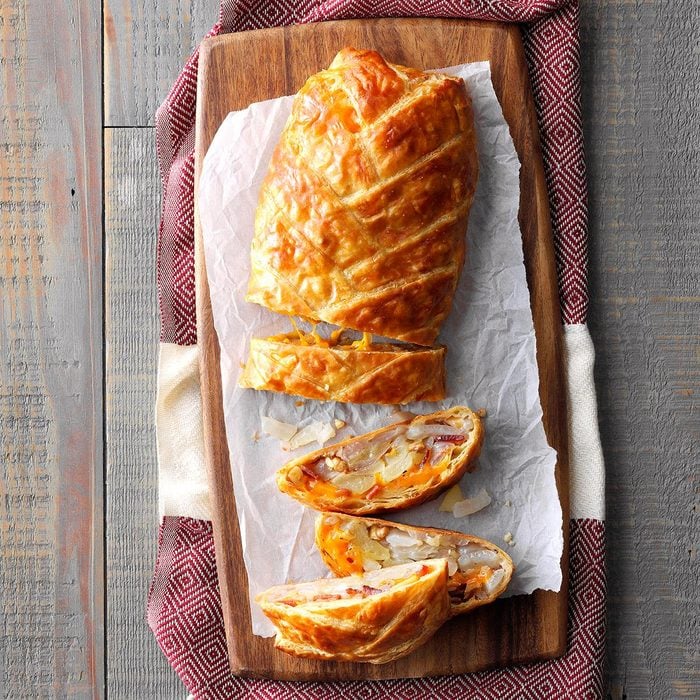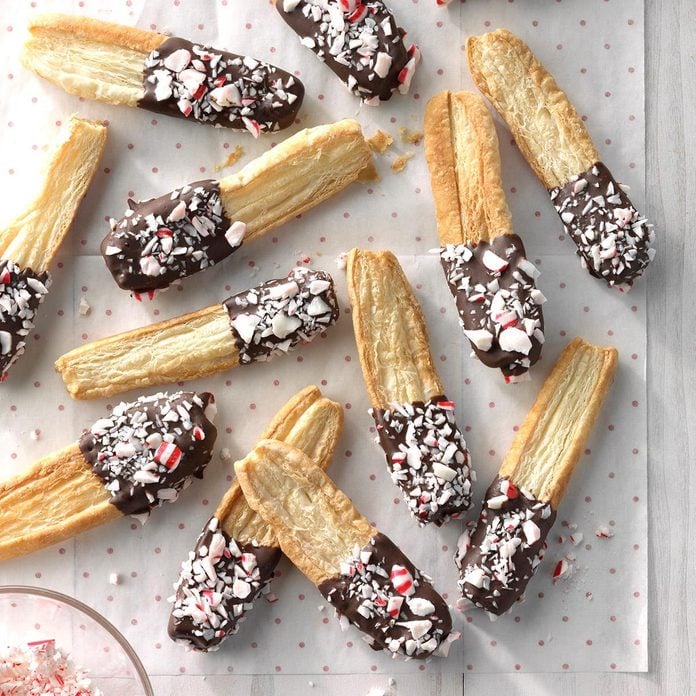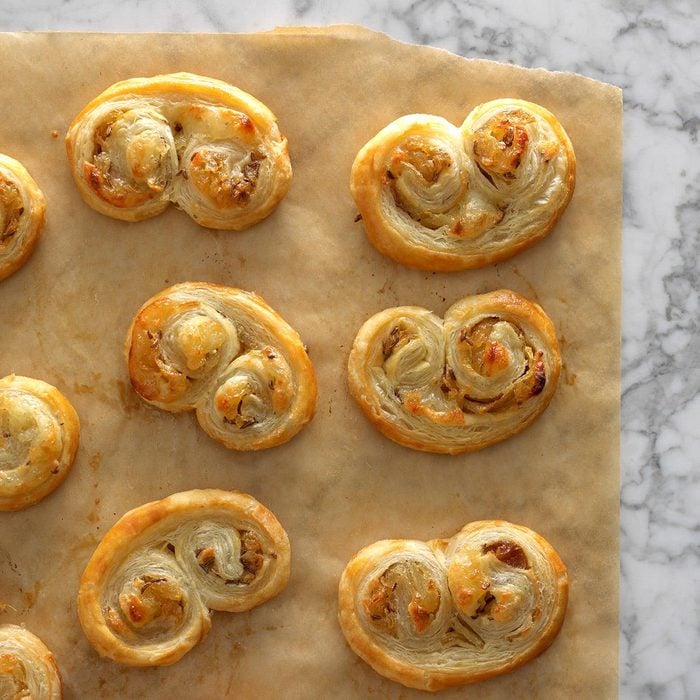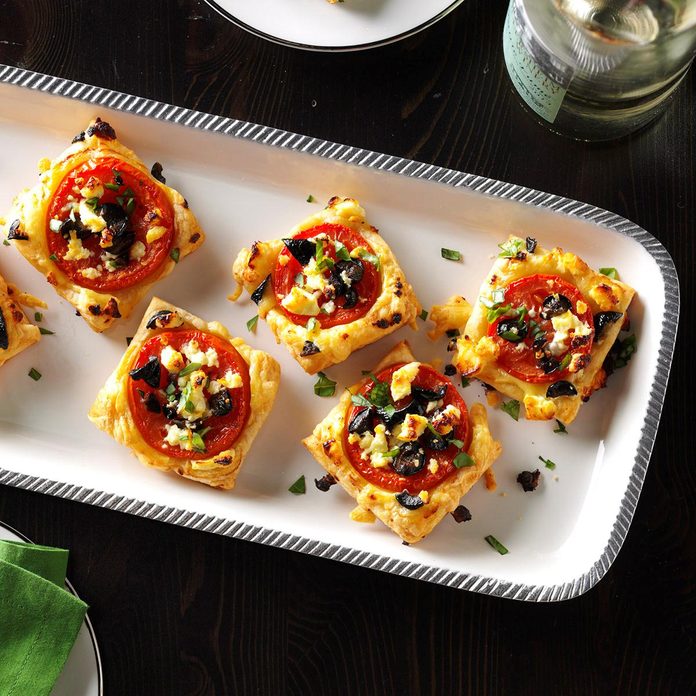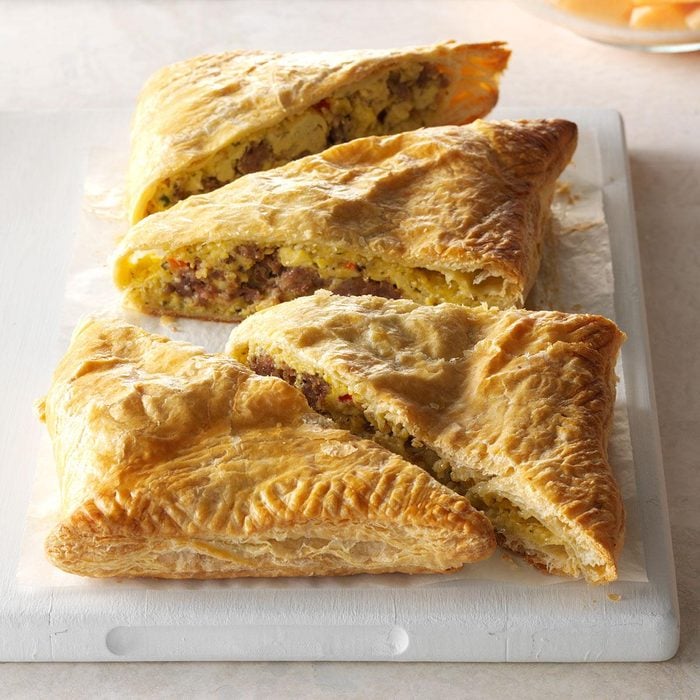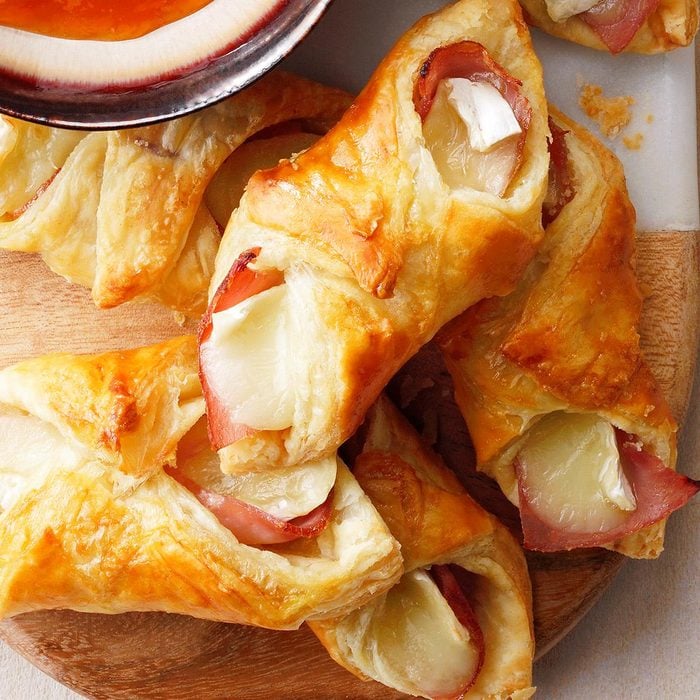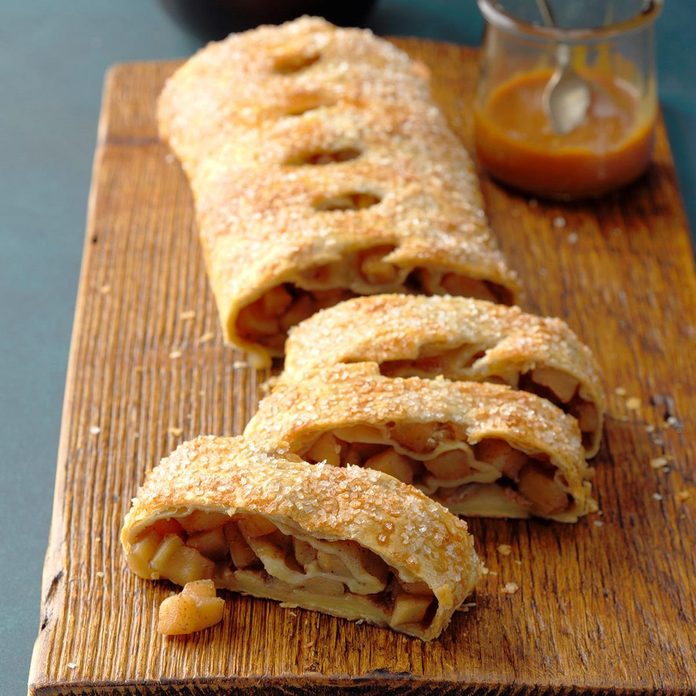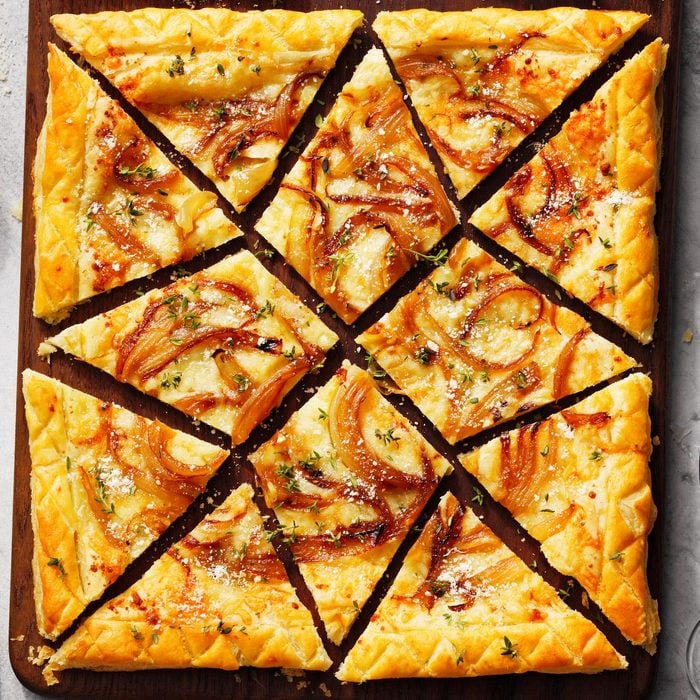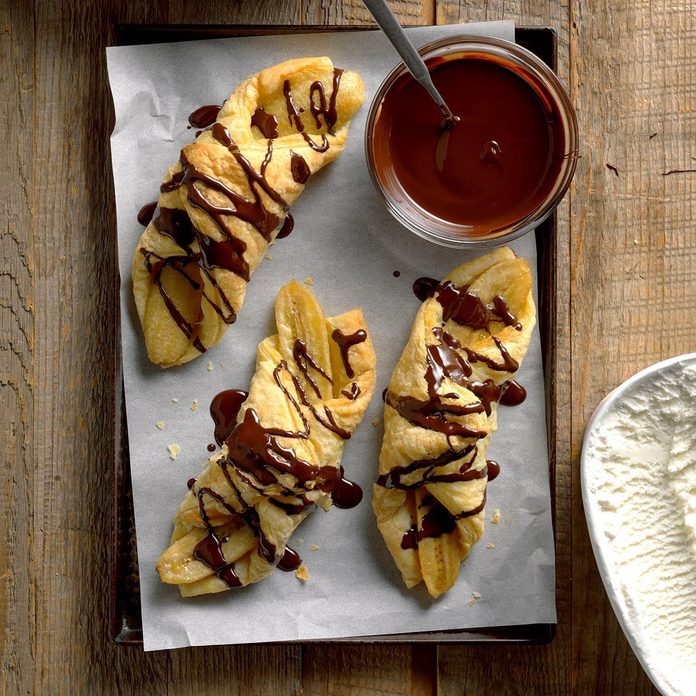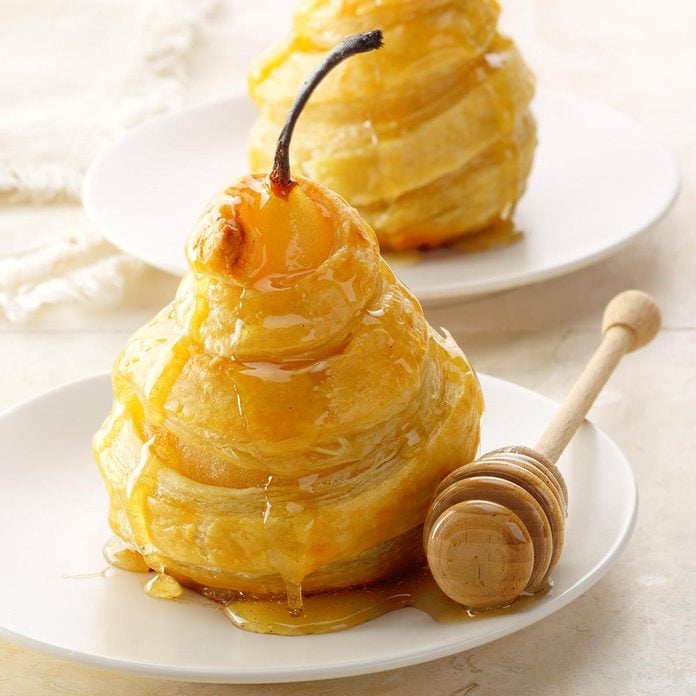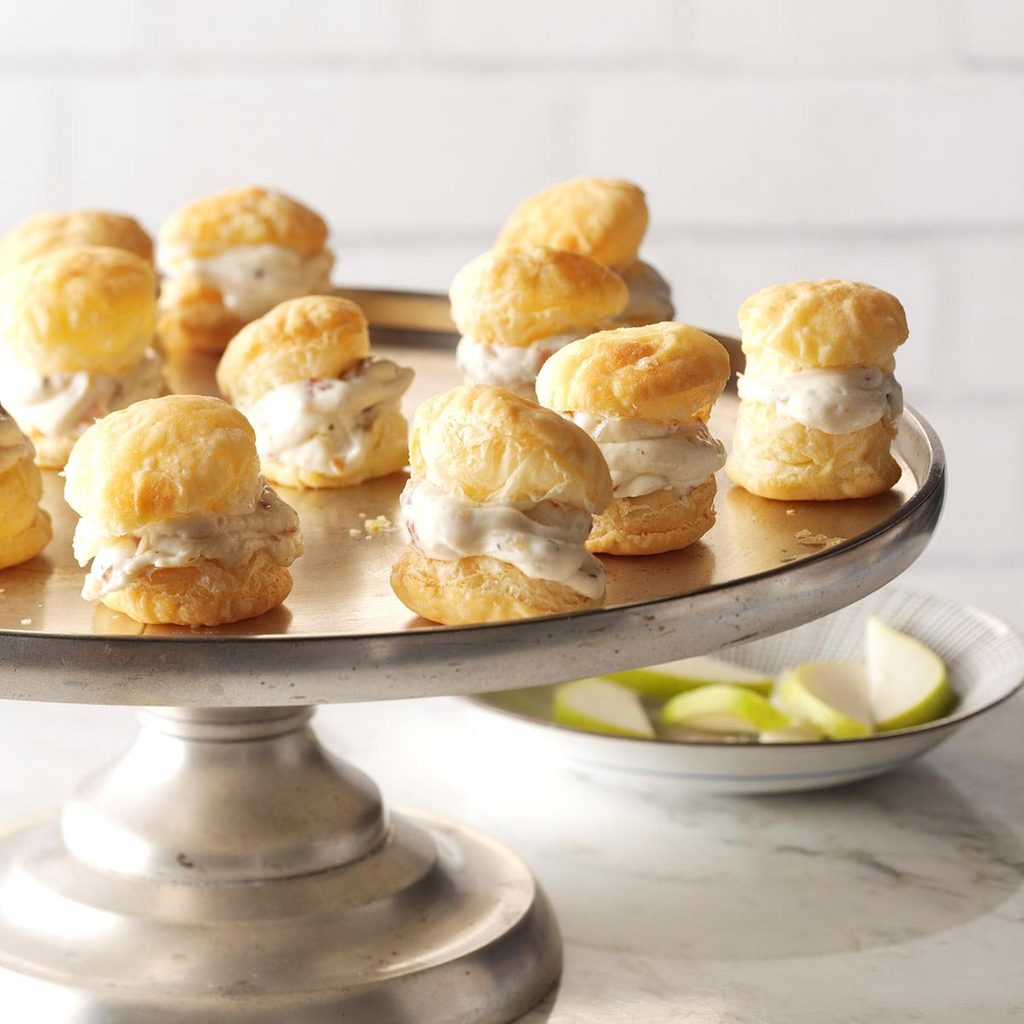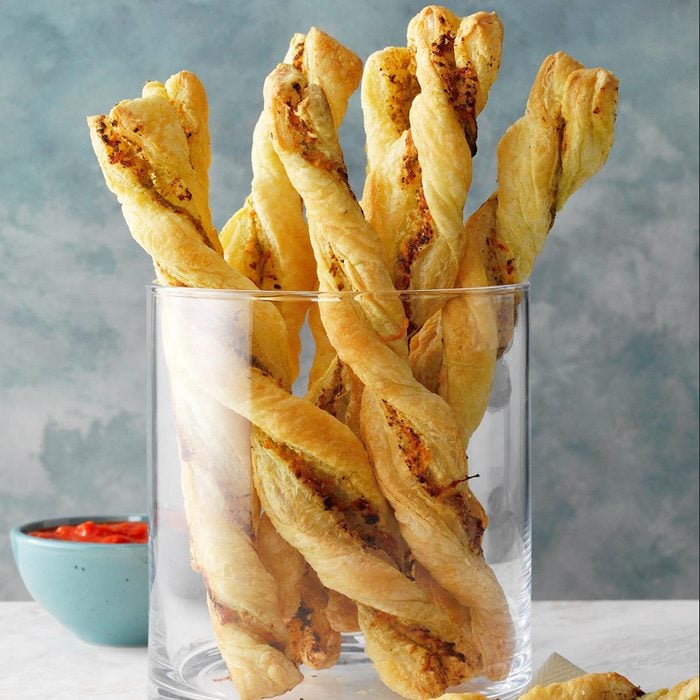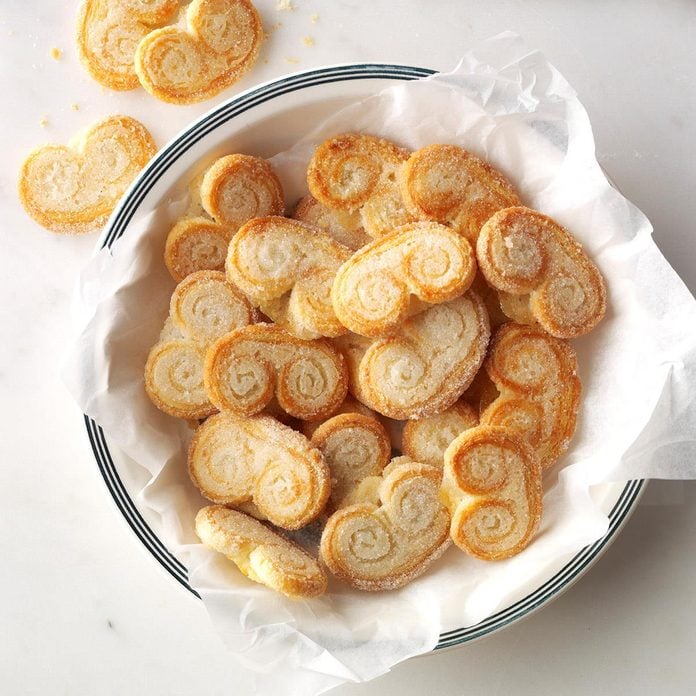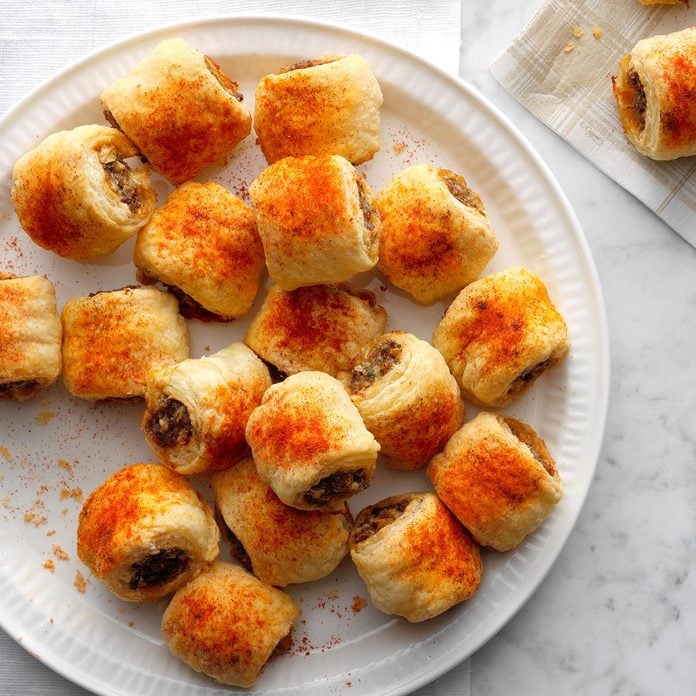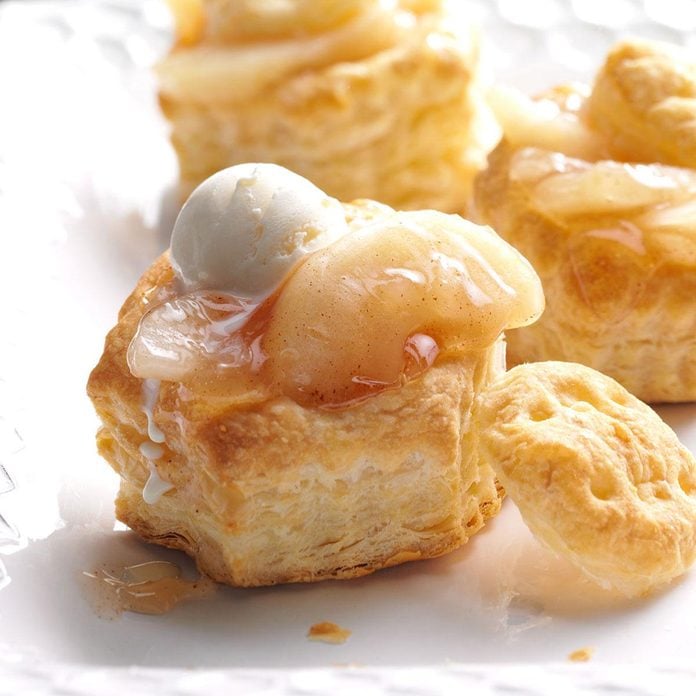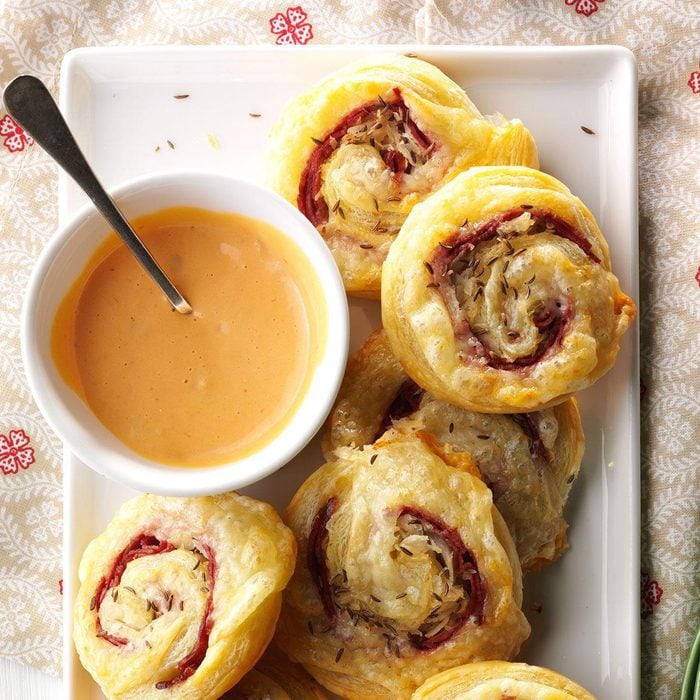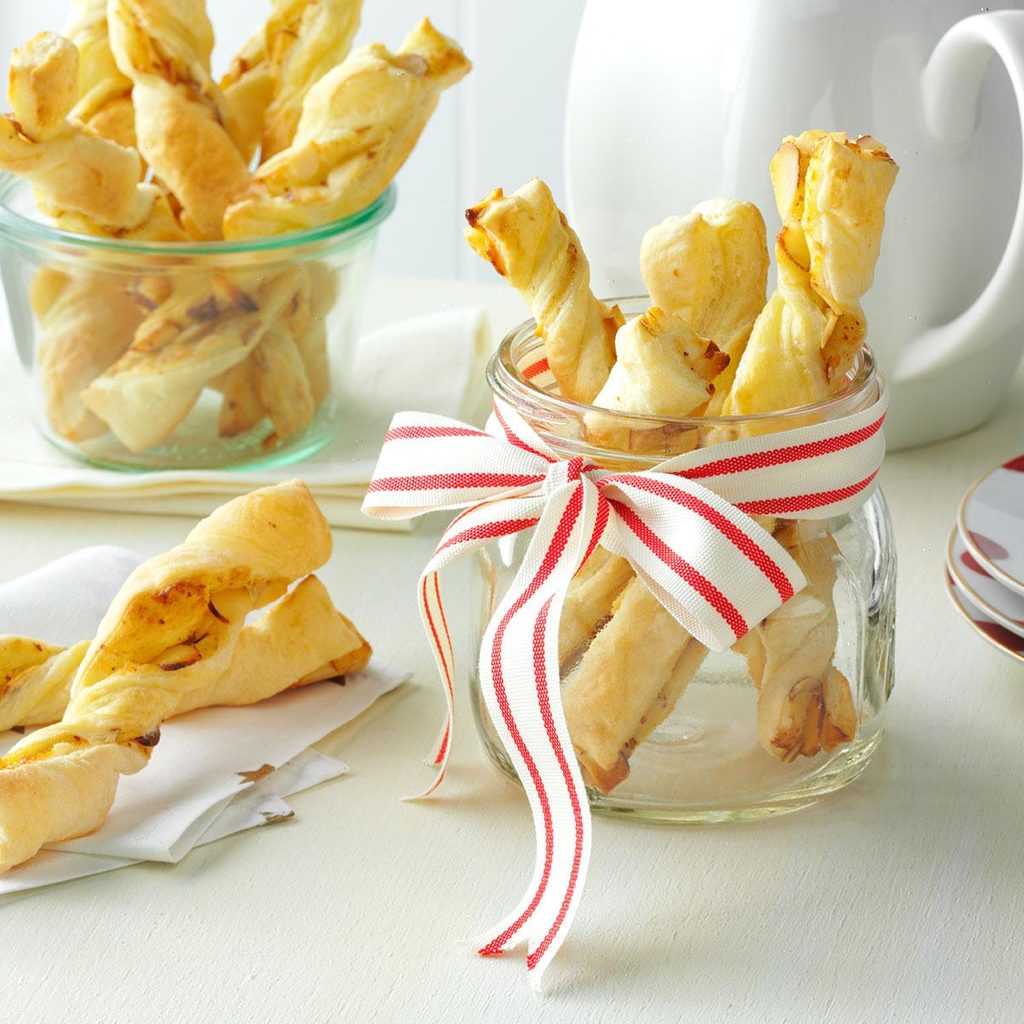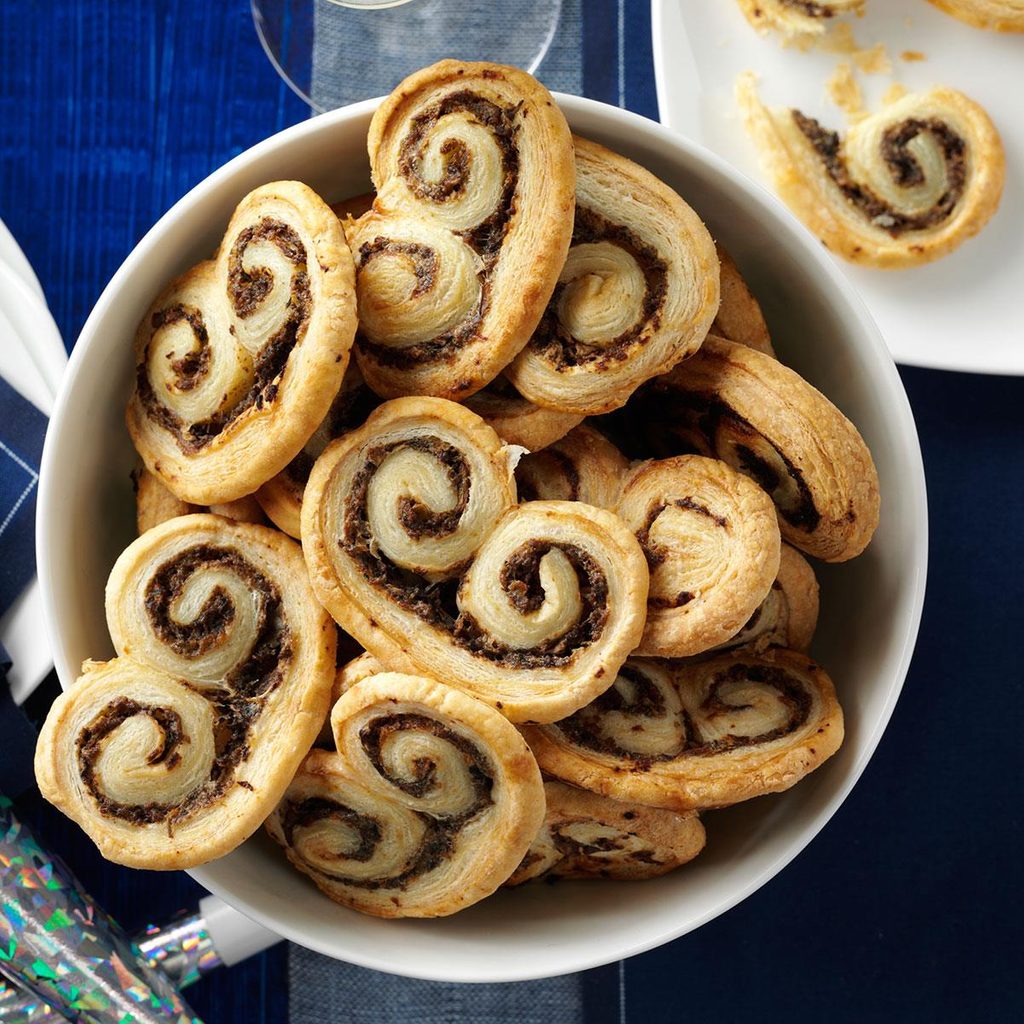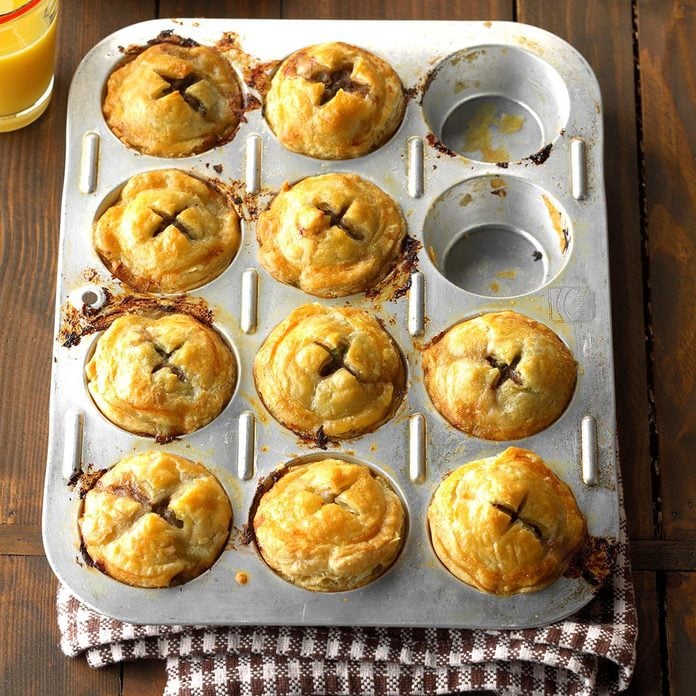Love a good palmier, fruit tart or pastry-topped chicken potpie? Chances are you’re familiar with the flaky wonder that is puff pastry (not to be confused with phyllo dough).
Puff pastry consists of dozens of paper-thin layers of dough separated by cold butter. As this pastry bakes, steam created from the water in the dough and butter makes the dough rise up and pull apart to create that flaky, many-layered crunch we all crave.
But to ensure those tasty results, learn how to store and bake puff pastry the right way.
How to Store Puff Pastry
No matter how you prep your pastry, remember that cold is key. Here’s how to store this delicate dough for best results.
How to Refrigerate Puff Pastry
If you’re a daredevil that made their own puff pastry, first, good for you; second, you can store homemade, unbaked puff pastry wrapped tightly in plastic wrap in the fridge for up to three days.
How to Freeze Puff Pastry
Homemade puff pastry can be wrapped tightly in plastic wrap and frozen for up to a month. If you’re picking up a pack of the frozen stuff at the supermarket, just pop that box right in the freezer. It’ll be good until the “use by” date on the box.
How to Store Baked Puff Pastry
Once baked, plain puff pastry can be stashed in an airtight container for up to a week. Filled pastries like these puff pastry danishes are best eaten right away. If you can’t finish a batch in one go, store in a sealed container and enjoy the next day.
How to Thaw Puff Pastry
When you’re ready to break out your frozen pastry to make a delicious puff pastry dessert, remove the package from the freezer and defrost at room temperature for about 20 minutes before handling.
When defrosted, handle the dough as little as possible to keep the butter nice and cold. Like homemade pie crust or biscuits, cold butter equals flaky layers.
Tips for Baking Puff Pastry
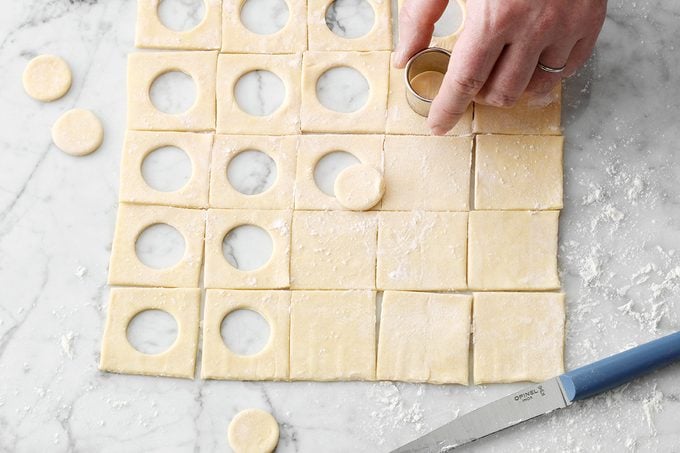 Taste of Home
Taste of Home
Why didn’t my puff pastry puff up?
This is every baker’s nightmare. Your puff pastry may fail to puff for several reasons.
- Warm pastry: Your pastry should be cold, cold, cold going into the oven. It’s worth reiterating: Cold butter equals flaky layers. If your pastry is warm, the butter can easily leech right out during baking. For best results, work quickly and keep your hands off!
- Cool Oven: To get the right lift, puff pastry needs a hot oven—about 400ºF. Don’t pop this pastry in the oven until it reaches the right temperature. For best results, be sure to calibrate your oven every so often. After all, when you set it to 400º, you want it to be precise.
- Thick pastry: Even perfectly prepared puff pastry won’t rise properly if it’s cut too thick. Be mindful of the measurements in your recipe.
- Egg wash issues: Be careful when brushing your pastry with an egg wash. If egg drips down the sides of the pastry, those flaky layers can stick together and prevent the dough from puffing up.
- Serrated knife cuts: When cutting puff pastry, never use a serrated knife. A serrated knife will chew up the edges and make it difficult for the pastry to rise. Instead, use a sharp knife for clean cuts.
Why didn’t my puff pastry rise evenly?
This is almost as disappointing as puff pastry that doesn’t puff at all! Here’s why your puff pastry isn’t rising evenly and how to fix it.
- Egg wash issues: Yep, egg wash can also cause your pastry to rise unevenly. Sometimes just a bit of egg can drip down the side and cause just a portion of the pastry to stick together. Leave a small margin of untouched pastry around the edge to prevent this issue.
- Uneven docking: Docking is just the fancy name for pricking pastry with a fork (chances are you’ve done it with pie and tart dough before). Uneven docking can cause some parts of the pastry to puff up too much and other parts to stay flat. For best results, pierce the pastry as evenly as you can. No need to break out a ruler, but be sure that the marks are as evenly distributed as you can make them.
- Uneven rolling and shaping: Sometimes your puff pastry will have an uneven rise if handled incorrectly, handled too much or rolled unevenly. Puff pastry is notoriously finicky, so don’t beat yourself up! Instead, keep your hands off and chill between steps.
- Hot spots in the oven: Even a perfectly calibrated oven can have hot spots which can cause pastry to rise unevenly. Rotate your pan halfway through baking to prevent this.
Why didn’t my puff pastry bake evenly?
Even if your pastry gets the perfect puff, an uneven bake can be disheartening. Here’s how to fix common issues with baked puff pastry.
- Hot spots in the oven: Yes, those same hot spots can cause pastry to bake unevenly. Just rotate your baking sheet halfway through to prevent any issues.
- Uneven rolling and shaping: If your pastry is rolled unevenly, it can cause an uneven bake. Be careful when you’re shaping.
Puff Pastry Recipes to Try
Rhubarb Tart
The rhubarb flavor in this tart balances nicely with the honey and amaretto. The mascarpone cheese makes it rich and creamy. Sometimes I'll even double the rhubarb for really sumptuous tarts. —Ellen Riley, Murfreesboro, Tennessee
Go to Recipe
Nutella Hand PiesThese pint-sized Nutella hand pies made with puff pastry are too good to keep to yourself! —Taste of Home Test Kitchen
Beef Stew Skillet PiePuff pastry makes a pretty topping for this homey skillet potpie. —Josh Rink, Milwaukee, Wisconsin
Raspberry Chocolate PuffsThis chocolaty, flaky dessert is one of my favorite show-off recipes because
it makes a spectacular presentation. The best part? It’s actually surprisingly easy and quick to make. —Anneliese Deising, Plymouth, Michigan
Check out these
16 puff pastry desserts that will satisfy your sweet tooth.
Fontina Asparagus TartThis lemony tart is loaded with fontina cheese and fresh asparagus. It's a snap to make but looks really impressive. Be advised…your guests will be vying for the last tasty slice. —Heidi Meek, Grand Rapids, Michigan
Lamb Pastry BundlesThis recipe was such a hit that my family has now incorporated the Mediterranean flavors into several dishes! —Tess Konter, New York, New York
Blood Orange Caramel Tarte TatinI never had blood oranges until I moved to California. The season is short, so I use them in everything while I can get them. That sweet orange flavor with some brown sugar is a perfect combination. Whenever I have something to go to, my friends demand that I bring this dessert. —Pamela Butkowski, Hermosa Beach, California. Looking for more recipes? Learn how to make
pear tarte tatin.
Brie Cherry Pastry CupsGolden brown and flaky, these bite-sized puff pastries with creamy Brie and sweet cherry preserves could easily double as a scrumptious dessert. —Marilyn McSween, Mentor, Ohio
Sunny-Side-Up Herbed TartFeel free to be creative with this versatile egg tart. Try Canadian bacon or ham as the meat ingredient, and add toppings such as thyme, chopped spinach or goat cheese.—Diana Neves, Lafayette, California
Chicken Marsala en CrouteI love puff pastry and chicken Marsala, so I decided to combine the two. The result is a very special meal perfect for Sunday dinner or any special occasion. Be sure to keep the puff pastry chilled so it is easier to work with. —Lorraine Russo, Mahwah, New Jersey
Puff Pastry Chicken PotpieWhen my wife is craving comfort food, I whip up this chicken pot pie with
puff pastry. It's easy to make, sticks to your ribs and delivers soul-satisfying flavor. —Nick Iverson, Denver, Colorado
Pumpkin NapoleonsThis is an outstanding dessert for special fall gatherings. The smooth pumpkin puree pairs well with the crunchy puff pastry.
Classic Beef WellingtonsPerfect for holidays, this beef Wellington recipe is also impressively easy. Find ready-made puff pastry sheets in the frozen food section. —Kerry Dingwall, Ponte Vedra, Florida
Caramelized Fennel TartsFennel is a favorite of mine, no matter how it’s cooked, but I think it is really amazing sauteed until rich and golden, then baked on delicious puff pastry. I’ve served these as a side dish and as an appetizer.—Lisa Speer, Palm Beach, Florida
Spinach and Feta BourekasLight and soft, with a bit of crunch, these bourekas are one of my favorite appetizers for holidays. They can be filled with almost anything, but spinach and feta is one of my favorite fillings topped everything seasoning, and these little triangles are out of this world. — Alex Stepanov, Matawan, New Jersey
Puff Pastry DanishesEven though they're simple to make, these jam-filled pastries are right at home in a holiday brunch spread. They were my dad's favorite, so the recipe will always be close to my heart. —Chellie Helmke, Jackson Center, Ohio
Puff Pastry Apple StrudelThis puff pastry apple strudel is such a fun recipe. It can be served alone or with a side salad. Different types of cheese, like goat, feta or jack, can be used in this dish. —Donna-Marie Ryan, Topsfield, Massachusetts
Blueberry TurnoversWhile you can make them a little in advance, these blueberry turnovers are best served the day they're made. —Taste of Home Test Kitchen, Milwaukee, Wisconsin
Peppermint Puff Pastry SticksI wanted to impress my husband's family with something you'd expect to find in a European bakery, and these chocolaty treats are what I came up with. The flaky pastry melts in your mouth. —Darlene Brenden, Salem, Oregon
Provolone Beef Pastry PocketsMy children always make sure they're home when they find out we're having these pockets for dinner. They're a smart way to use leftover pot roast. —Karen Burkett, Reseda, California
Spicy Crab Salad TapasI served these at a party and everyone went wild! These delicious morsels have a crispy flaky outside filled with creamy sweet crab that has a little kick. I used scalloped-edge cookie cutters to cut my pastry, but you can use a small biscuit cutter. —Vanessa Mason, Summerdale, Alabama
Creamy Chicken Vol-au-VentMy friends and I have been getting together for "ladies lunches" for years. These vol-au-vents are the perfect no-fuss fancy food; they look complicated, but are actually simple and fun to make. Whenever I think of good friends and good company, I think of these savory pastries. —Shauna Havey, Roy, Utah
Onion Brie AppetizersGuests will think you spent hours preparing these cute appetizers, but they're really easy to assemble, using purchased puff pastry. And the tasty combination of Brie, caramelized onions and caraway is terrific.
-Carole Resnick, Cleveland, Ohio
Mediterranean Tomato BitesMy friend Mary served these lovely appetizers at a summer gathering several years ago, and I adapted it a bit to my taste. It's a great August recipe when tomatoes and herbs are at their freshest! —Susan Wilson, Milwaukee, Wisconsin
Southern Brunch Pastry PuffMy family just about jumps out of bed when the smell of eggs, sausage and buttery pastry hits their noses. This recipe is morning magic. —Misty M. Leddick, Chester, South Carolina
Air-Fryer Ham and Brie PastriesFancy appetizers don’t have to be difficult. In fact, this recipe proves it’s easy to make something impressive. You can prep these pastries ahead of time and pop them into the air fryer just as your guests arrive. —Jenn Tidwell, Fair Oaks, California
Caramel Apple StrudelMy father, who was born and raised in Vienna, Austria, would tell us stories about how his mother covered all the kitchen counters with dough whenever she made apple strudel. This recipe is a modern, delicious way to carry on part of my family's heritage. —Sarah Haengel, Bowie, Maryland
Gruyere & Caramelized Onion TartsGarlic and onion is a match made in heaven, in my opinion, so I love creating new recipes to showcase the pair. Gruyere cheese adds impeccable flavor to the eye-catching starter. —Lisa Speer, Palm Beach, Florida
ChickaritosAfter our son grew fond of a fast-food restaurant’s fried burritos, I created this recipe by substituting beef with chicken and skipping the frying. It’s been a hit with our family ever since! —Nancy Coates, Oro Valley, Arizona
Shrimp Puff Pastry TrianglesShrimp de Jonghe was invented in Chicago. It is usually baked and served in a casserole dish, but my version is handheld. In these shrimp puff pastry triangles, the shrimp filling is perfect with the crunchy pastry dough. —Arlene Erlbach, Morton Grove, Illinois
Chocolate Banana BundlesBanana with chocolate is such an irresistible combo that I make this quick dessert often. You can also top these tasty bundles with the butter and brown sugar mixture left over from coating the bananas, or sprinkle on a dash of sea salt. —Thomas Faglon, Somerset, New Jersey
Honeyed Pears in Puff PastryA honey of a salute to late-summer pear season, this cozy dessert looks both elegant and decadent. Wrapped in puff pastry, the pears resemble little beehives. —Heather Baird, Knoxville, Tennessee
Pancetta, Pear & Pecan PuffsI was recently at a wedding reception where the menu was all small bites. Here’s my rendition of the pear pastries they served. They're the perfect combo of savory and sweet. —Arlene Erlbach, Morton Grove, Illinois
Pesto TwistsUse pesto made straight from your garden if you make these in the summer or purchase it prepared from the grocery store to fill these easy appetizers. —Jaye Beeler, Grand Rapids, Michigan
PalmiersIt takes just two ingredients to make these impressive but easy-to-do French pastries, which are often called palm leaves. —Taste of Home Test Kitchen, Milwaukee, Wisconsin
Smoked Salmon Bites with Shallot SauceTangy mayonnaise-Dijon sauce adds zip to flaky pastry and layers of crisp arugula, thinly sliced smoked salmon and nutty-flavored Asiago cheese. —Jamie Brown-Miller, Napa, California
Mini Party BurgersWe love finger foods in the South. For parties, I make mini burgers in advance and then wrap them in pastry, bake them and serve them with assorted sauces. —Monica Flatford, Knoxville, Tennessee
Aussie Sausage RollsI was born and raised in Australia, but moved to the U.S. when I got married. When I long for some Australian recipes, I bake up a batch of this sausage roll recipe and share them with neighbors or co-workers. —Melissa Landon, Port Charlotte, Florida
Puffed Apple PastriesFor a little extra indulgence, serve these oven-fresh pastries with a scoop of creamy vanilla ice cream. Cherry pie filling can be substituted for the apple. —Taste of Home Test Kitchen
Greek BreadsticksGet ready for rave reviews with these crisp breadsticks twisted with Greek-inspired goodness. Best served fresh from the oven. —Jane Whittaker, Pensacola, Florida
(
Galaktoboureko is another Greek recipe that uses phyllo dough—it's a custard-based dessert that goes great with coffee.)
Reuben RoundsFans of the classic Reuben sandwich will go crazy for baked pastry spirals of corned beef, Swiss and sauerkraut. They're so easy to make, and bottled Thousand Island dressing makes the perfect dipping sauce. —Cheryl Snavely, Hagerstown, Maryland
Quiche Pastry CupsMy grandmother used to make egg cup surprises for family brunches on special occasions. The added fillings were always a surprise since she never seemed to use the same combination of ingredients twice. As children, we took guesses as to what we'd find in the tender crust—the game always added fun to our meals. —Denalee Standart, Rancho Mureta, California
Sweet Almond TwistsThese delicate almond pastries make lovely light-as-air accompaniments for coffee, tea or cocoa. Your guests will never guess the recipe calls for packaged frozen dough. When I give them as a fresh-baked gift, I tuck in a note saying that they're best served warmed—and right away! —Gloria Devendittis, Waterford, Connecticut
Mushroom PalmiersI found this recipe while working at a small-town museum in West Texas. It was the appetizer for a fundraiser a long, long time ago, and it’s still a huge hit at parties. Frozen puff pastry helps make it easy and impressive. The palmiers also freeze well. —Judy Lock, Panhandle, Texas
Mini Sausage PiesThe simple ingredients and family-friendly flavor of these little sausage cups make them a go-to dinner favorite. And everyone gets their own pies—which makes them even better! —Kerry Dingwall, Ponte Vedra, Florida
Peanut Butter Cup NapoleonsTop layers of puff pastry and peanut butter ice cream with a warm, sweet drizzle the whole family will love! It’s a terrific last-minute dessert, or you can freeze the cooled pastry and scooped ice cream separately in an airtight container the day before you serve it. —Jeanne Holt, Mendota Heights, Minnesota
